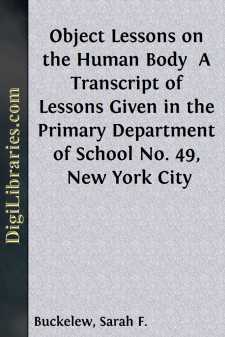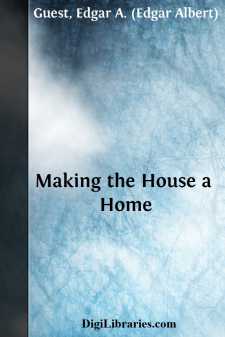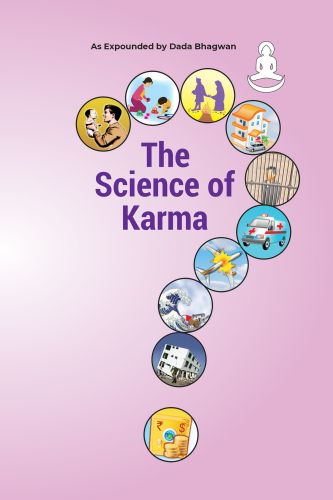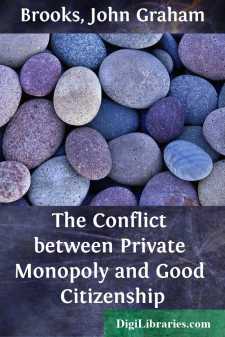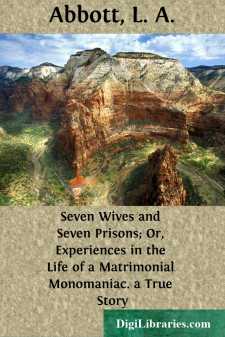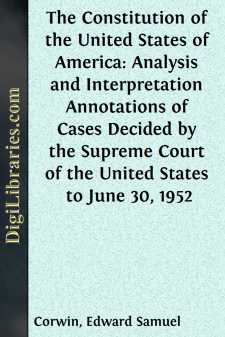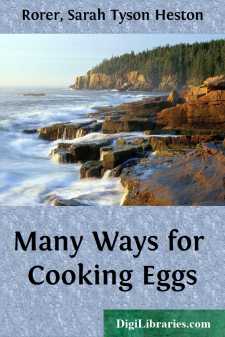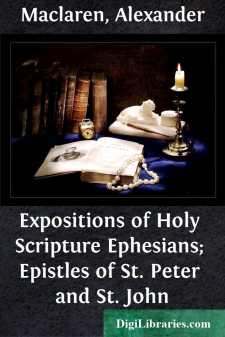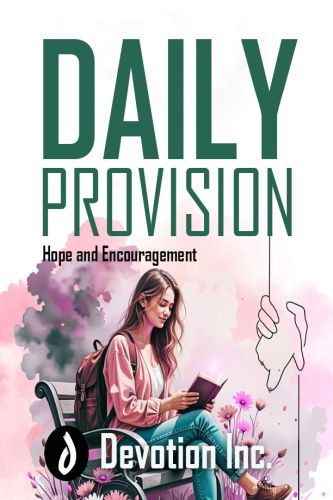Categories
- Antiques & Collectibles 13
- Architecture 36
- Art 48
- Bibles 22
- Biography & Autobiography 813
- Body, Mind & Spirit 142
- Business & Economics 28
- Children's Books 16
- Children's Fiction 13
- Computers 4
- Cooking 94
- Crafts & Hobbies 4
- Drama 346
- Education 46
- Family & Relationships 57
- Fiction 11829
- Games 19
- Gardening 17
- Health & Fitness 34
- History 1377
- House & Home 1
- Humor 147
- Juvenile Fiction 1873
- Juvenile Nonfiction 202
- Language Arts & Disciplines 88
- Law 16
- Literary Collections 686
- Literary Criticism 179
- Mathematics 13
- Medical 41
- Music 40
- Nature 179
- Non-Classifiable 1768
- Performing Arts 7
- Periodicals 1453
- Philosophy 64
- Photography 2
- Poetry 896
- Political Science 203
- Psychology 42
- Reference 154
- Religion 513
- Science 126
- Self-Help 84
- Social Science 81
- Sports & Recreation 34
- Study Aids 3
- Technology & Engineering 59
- Transportation 23
- Travel 463
- True Crime 29
Object Lessons on the Human Body A Transcript of Lessons Given in the Primary Department of School No. 49, New York City
Categories:
Description:
Excerpt
AUTHOR'S NOTE TO THE PUPIL.
This book has been prepared to help you in learning about "the house you live in," and to teach you to take care of it, and keep it from being destroyed by two of its greatest enemies,—Alcohol and Nicotine.
As you study its pages, be sure to find out the meaning of every word in them which you do not understand; for, if you let your tongue say what your mind knows nothing about, you are talking parrot-fashion.
And do not forget that you must pay for all the knowledge you obtain, whether you are rich or poor. Nobody else can pay for you. You, your own self, must pay attention with your own mind, through your own eyes and ears, or do without knowledge.
Be wise: gain all the knowledge you can concerning everything worth knowing, and use it for the good of yourself and other people.
"KNOWLEDGE IS POWER."
A, the heart; B, the lungs; light cross lines, arteries; heavy lines, veins.
FORMULA FOR INTRODUCTORY LESSONS.
1. My body is built of bones covered with flesh and skin; the blood flows through it, all the time, from my heart. I breathe through my nose and mouth, and take the air into my lungs.
2. The parts of my body are the head, the trunk, the limbs.
3. My head.
The crown of my head.
The back of my head.
The sides of my head.
My face.
My forehead.
My two temples.
My two eyes.
My nose.
My two cheeks.
My mouth.
My chin.
My two ears.
My neck.
My two shoulders.
My two arms.
My two hands.
My trunk.
My back.
My two sides.
My chest.
My two legs.
My two knees.
My two feet.
I am sitting erect.
QUESTIONS FOR THE FORMULA.
1. Tell about your body.
2. Name the parts of the body.
3. Name the parts of the head, trunk, and limbs.
THE NOSE AND THE MOUTH.
Be sure to keep your mouth closed when you are not talking or singing, especially when you are walking, running, or asleep. The two nostrils are outside doors, always open to admit the air, and inside of the upper part of the nose there are two other openings, through which it passes into the throat. Air which goes this way is warmed, cleansed, and moistened, but that which is breathed directly through the mouth is not so well prepared for its work in the lungs.
Do not use your mouth as a box or a pin-cushion; the pin, or whatever yon have put into it, may slip into your throat and cause your death.
QUESTIONS ON THE INTRODUCTORY LESSONS.
Of what is the body built?—"Of bones."
What covers the bones?—"Flesh."
What covers the flesh?—"Skin."
What flows through the body?—"Blood."
Where does the blood flow from?—"The heart."
When does the blood flow from the heart?—"Every time the heart beats."
Show with your hand how the heart beats.
When does the heart beat?—"All the time."
What happens when the heart stops beating?—"We die."
What do you see on the back of your hand, beneath the skin?—"Veins"
What is in the veins?—"Bad blood."
What are the veins?—"Pipes for the bad blood to pass through."
Where do the veins carry the bad blood?—"To the heart."
Where does the heart send the bad blood?—"To the lungs."
What happens to the bad blood when in the lungs?—"It is made pure."
What makes the bad blood pure?—"The air."
How does the air get into the lungs?—"Through my nose, mouth, and windpipe."
What is breathing?—"Letting the air into and out of my lungs, through my nose, mouth, and windpipe."
When do you breathe?—"All the time."
What do you breathe?—"Air."
What do you breaths through?—"My nose, mouth, and windpipe."
Where do you get the air?—"Everywhere."
Where do the lungs send the pure blood?—"To the heart."
Where does the heart send the pure blood?—"All through the body."
How does the heart send the pure blood through the body?—"Through pipes called arteries."
What kind of blood passes through the arteries?—"Pure blood."
What kind of blood passes through the veins?—"Impure blood."
What carries the pure blood through the body?—"The arteries."
What carries the impure blood through the body?—"The veins."
What makes blood?—"Food and drink."
What is food?—"Anything good to eat."
What is drink?—"Anything good to drink."
Name some kinds of wholesome food.—"Meat, potatoes, oranges, apples, etc."
Name some kinds of wholesome drink.—"Water, milk, lemonade, etc."
What do you mean by wholesome food?—"Food that will make good blood."
What do you mean by wholesome drink?—"Drink that will make good blood."
What does the blood make?—"Bones, flesh, skin, hair, nails, and cartilage."
What use is the blood to the body?—"It makes the body grow, and keeps it alive."
Name some kinds of poisonous drinks.—"Rum, brandy, ale, cider, etc."
What do you mean by poisonous drinks?—"Drinks which hurt or poison the body."
Why do you say that rum and the other drinks you have named are poisonous?—"Because they do harm to every part of the body."
Which part do they hurt most?—"The head or brain."
What harm do they do to the brain?—"They make it unfit to do its work."
What work does the brain do?—"Thinking."
Then what harm do rum, brandy, wine, and these other drinks do to the brain?—"They make it unfit to think."
What other poison do some people use?—"Tobacco."
When do children use tobacco?—"When they chew tobacco; when they smoke cigars or cigarettes."
How much does tobacco poison hurt children?—"More than it hurts anybody else."
In what way does it hurt children?—"It keeps children from growing fast; from being strong and healthy; and from learning as well as they ought."
How does it do all this mischief to children?—"It poisons their lungs, their heart and blood, and their brain."


